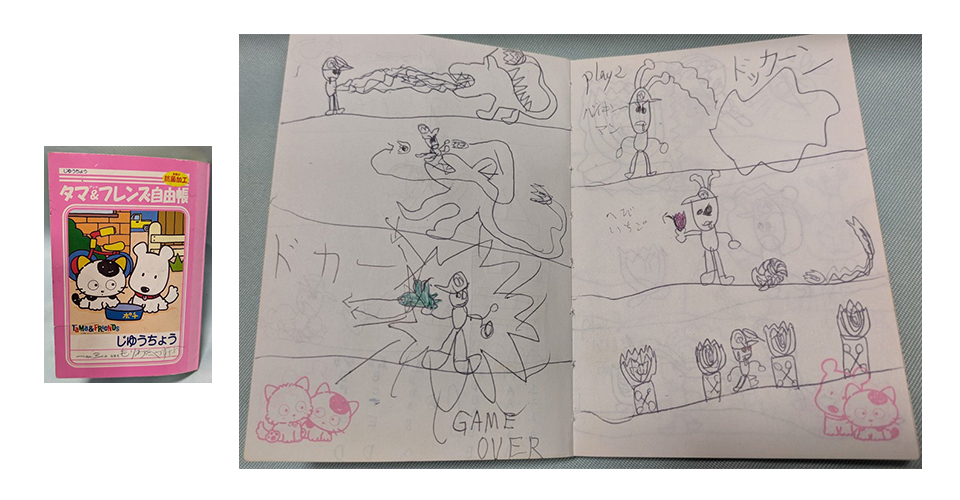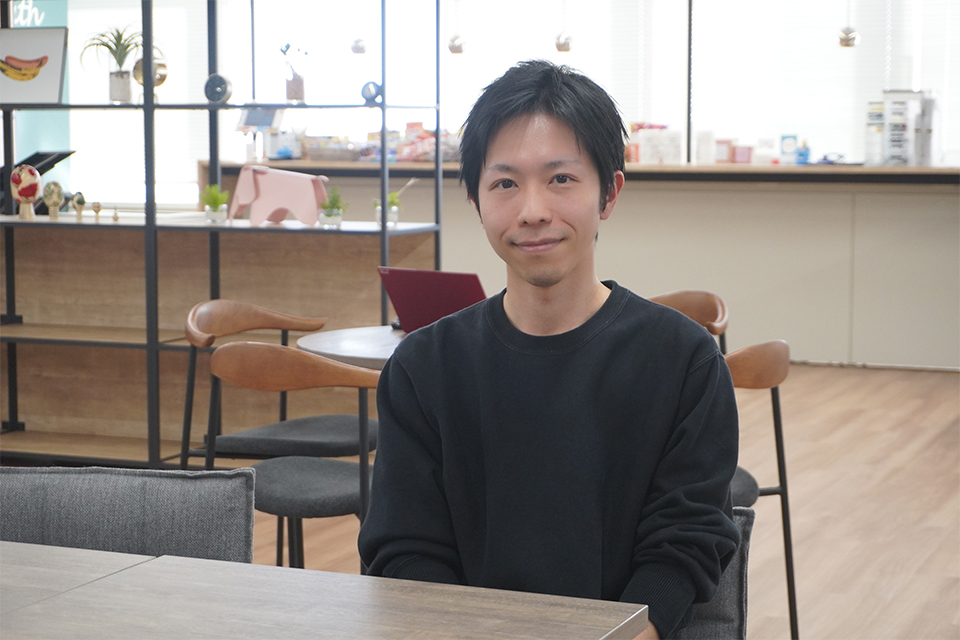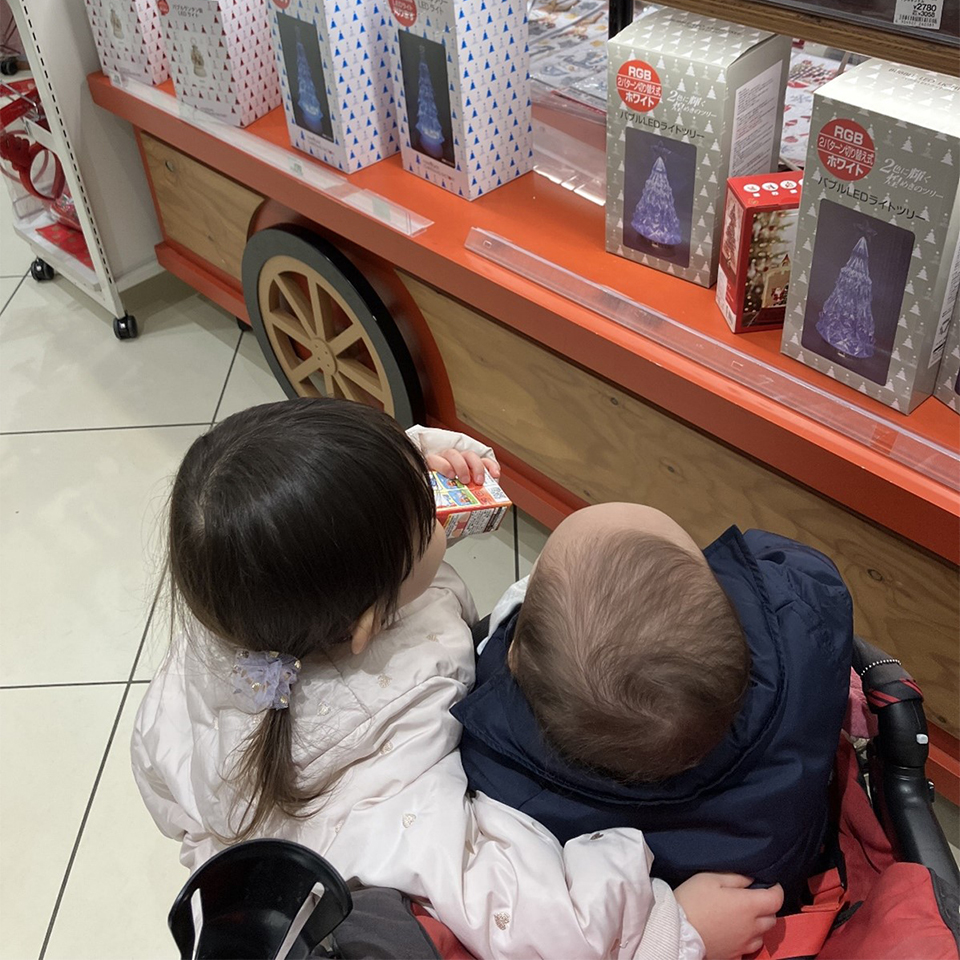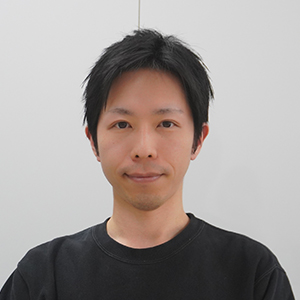Motivated by helping others and shaping a better future for children
Yasutaka MoriwakiConverging Technologies Laboratory

A calling to help others
I have two primary reasons for wanting to pursue a career in R&D. First, I believe my way of thinking and acting is well-suited to this field. Since childhood, I've enjoyed thinking at my own pace, using my imagination, and creating things. I love drawing and have always kept a small notebook and pen by my bedside to draw my own manga before bed, letting my imagination run wild. I also enjoy composing music freely on the piano. The work of research and development, which involves dedicating time to creating something new, feels like a perfect fit for my personality.

Second, I have a strong desire to use my knowledge to help people. While I once believed that only doctors and medical professionals could be involved in healthcare, I learned that I could contribute to medicine from an engineering perspective, which led me to study in the School of Engineering Science. At university, I conducted research on human heart rate variability time series data, using signal processing and statistical analysis to estimate and evaluate autonomic nervous system function for clinical applications. The goal was to detect health conditions and signs of diseases like atrial fibrillation and congestive heart failure through the analysis of heart rate variability data. I applied my own analytical methods to real experimental data and obtained clinically useful results. This experience allowed me to use my academic knowledge and IT skills to make a potential societal contribution through clinical application, cementing my strong desire to work as a researcher.
Initial hurdles in R&D: a gap between my approach and doctors' needs
Shortly after joining the company, I was assigned to the R&D of AI-based technology to retrieve similar disease cases. In medical image diagnosis at hospitals and other medical institutions, the spread of a lesion (changes in the body caused by disease) can suggest multiple possible diagnoses. In such cases, doctors first search a database of past images for cases with similar three-dimensional lesion spread (hereinafter referred to as similar cases). The diagnoses of these similar cases can inform their judgment. However, finding similar cases requires extensive knowledge and experience, and the manual process is time-consuming, placing a significant burden on doctors. Therefore, to develop a technology for retrieving similar cases, I began by investigating methods to quantify the three-dimensional spread of lesions.
However, initially, I lacked medical knowledge about organs (mainly lungs) and lesions, as well as image processing techniques. My days were filled with studying, poring over books and articles to acquire knowledge, and writing image processing code. I came up with ideas for quantifying the 3D spread of lesions and managed to implement them using the knowledge and techniques I had acquired. However, when I showed the results to the doctors at our collaborative research institution, it became clear that there was a gap between my approach and what they needed. Doctors, when searching for similar cases, divide the organ into multiple regions and carefully observe the spread of the lesion in each region. My approach, however, ignored medical knowledge and was completely different from how doctors viewed the images. As a result, I had to start over from scratch.
Developing technology by reflecting client insights
This experience taught me the crucial importance of deeply understanding the practical realities of the field before formulating ideas, rather than relying solely on general knowledge from books and articles or my own assumptions. Afterward, I conducted numerous interviews with doctors and engaged in daily discussions with my research leader to refine my ideas. As a result, I developed a technology that automatically segments regions within an organ based on its anatomical structure and then uses AI to recognize lesions automatically within each region. This innovative approach combines the doctors' perspective with image analysis and is a technology capable of performing similar case searches, a task that previously took up to 50 minutes, in just a few seconds.
In collaboration with Hiroshima University, we validated the effectiveness of this technology using hundreds of real clinical images. Our findings were presented at international conferences and published in English-language medical journals. We held a press conference attended by doctors, resulting in extensive coverage by NHK, newspapers, and other media outlets. The technology also received several awards (including the Electrical Science and Engineering Promotion Award and the ITE technology development award). It has been incorporated into our image diagnosis support product and is expected to support the future of medical practices in Japan through its use in large hospitals and other facilities. This experience confirmed my belief in the importance of listening to the voices of those on the front lines and working together to solve problems as a researcher. More importantly, successfully developing this technology in collaboration with medical professionals has greatly boosted my confidence.

Contributing to solving social issues through research on improving prediction accuracy
In research, I prioritize satisfying intellectual curiosity above all else. The feeling of "this is interesting" is the greatest motivator for sustained effort. Having completed the image search technology project, I am currently conducting research on improving the accuracy of time-series forecasting technology for Fujitsu Business Application Operational Data Management & Analytics Demand Forecasting. This solution targets the food retail sector, such as supermarkets, and predicts the number of customers and sales volume for each store on a daily and hourly basis, based on POS data. This enables more efficient store operations, the reduction of food loss, and improved energy management. Furthermore, this time-series forecasting technology has potential applications in various fields beyond demand forecasting in food retail. I aim to tackle challenges in a wide range of areas, including healthcare, agriculture, crime prevention, and manufacturing, in the future.
Cherishing my time with family
I used to be actively involved in activities like table tennis and a cappella. I was a member of the table tennis club in junior high and high school, and even continued playing with the Fujitsu table tennis club. During my university years, I joined a cappella circle and participated in several national competitions. Even now, I occasionally get invited to perform live by acquaintances, and I've even performed in places like Hokkaido and Hiroshima. However, since having children, my life has become family-centered. We often go out as a family on weekends, and I especially enjoy watching my children grow. My wife and children love Disney, so we spent New Year's Eve 2024 at Disneyland and had a wonderful time.

An inherited aspiration
When I was in elementary school, we took a family trip to Hawaii. I got terribly seasick. My father, speaking fluent English, explained the situation to the staff and got me some medicine, which thankfully helped me recover. I still vividly remember how reliable and reassuring my father seemed, using his English skills to help me. Now, as a father of two myself, I want my children to live safely, happily, and with hope every day, even as they grow older. And I want the world to be a better place for them to live in. Just as my father helped me back then, I want to contribute as a researcher, creating innovative technologies with original ideas, regardless of the field, to enrich the future that my children will inherit.
Messages from colleagues
Since joining the company, Yasutaka has achieved remarkable results as a media processing specialist, collaborating with medical institutions to develop technologies that support doctors' image diagnoses. Currently, he is leveraging his knowledge and experience to take on the challenge of developing cutting-edge technologies in a broader field, namely future trend prediction for businesses. I am very much looking forward to his future contributions. (Takayuki Baba, Research Director, Converging Technologies Laboratory)

Titles, numerical values, and proper nouns in this document are those reported when this interview was made.




